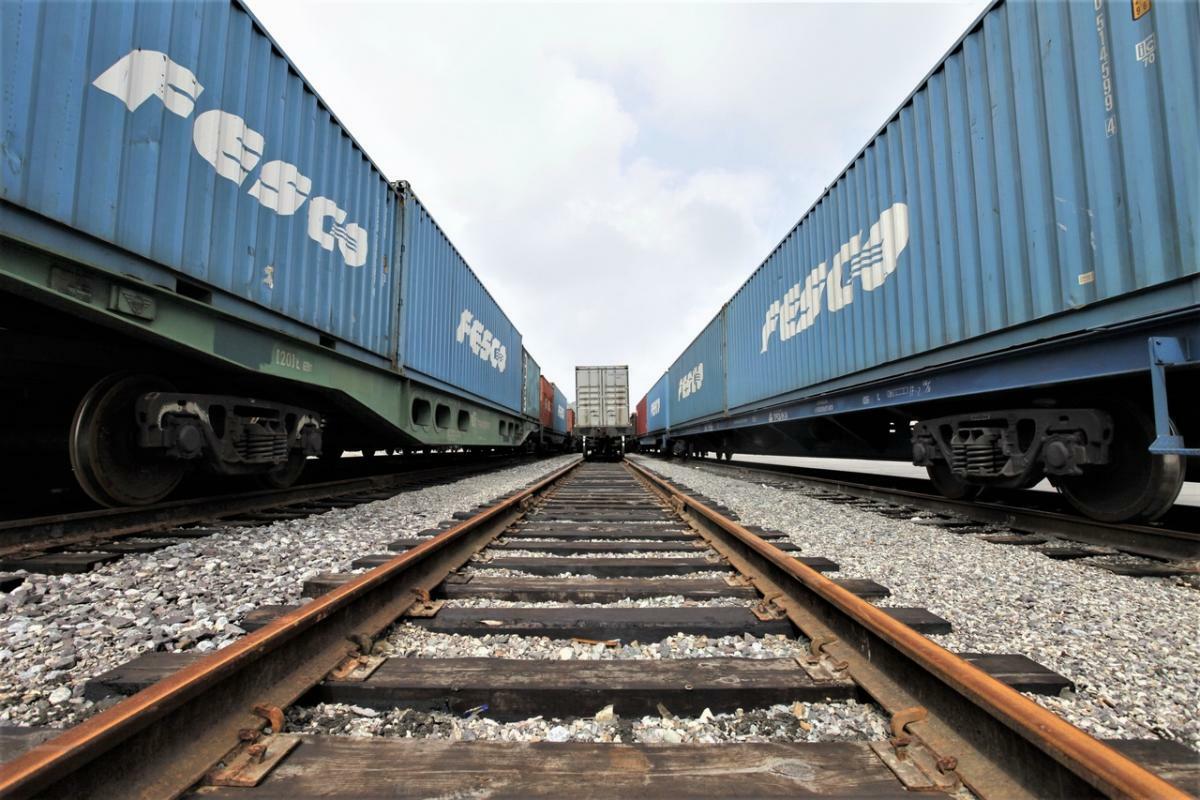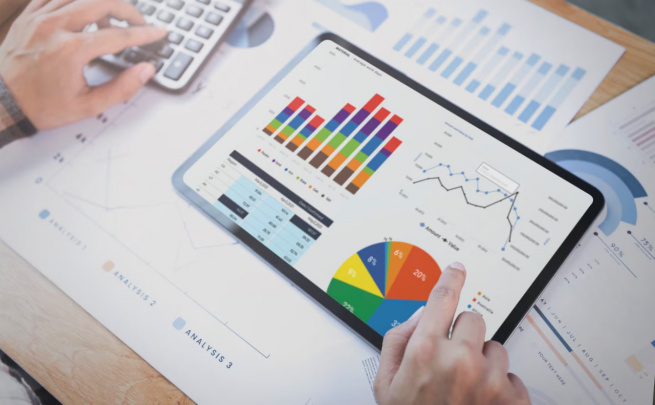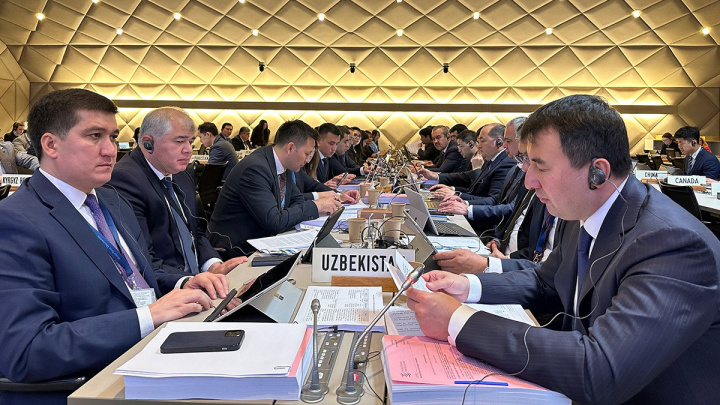Uzbekistan’s volume of foreign trade turnover reached almost $45 billion in Jan-Sep 2023
This made it possible to partially compensate for the decrease in revenue from the supply of fertilizers and gas.

Photo: FESCO
Uzbekistan’s foreign trade turnover for nine months amounted to $44.75 billion. Compared to the same period last year, it increased by 22%, the Statistics Agency reports.
Exports increased by 23.5% compared to last year and amounted to $17.74 billion. The volume of imports grew a little slower – by 21%, to $27.01 billion.
Gold supplies abroad remain at the May level – $5.63 billion, although this is almost 90% more than last year. Against this background, the negative trade balance reached $9.27 billion (+17%).
China strengthened its position as the largest trading partner, accounting for $9.45 billion in bilateral trade, or 21.1% of the total. Imports from the PRC amounted to $7.59 billion.
Russia remains the main export market for Uzbekistan ($2.32 billion), with trade turnover with it amounting to $7.03 billion. In addition, there is active trade with Kazakhstan ($3.22 billion), Turkey ($2.35 billion) and South Korea ($1.69 billion).
Export
Excluding gold, manufactured goods again became the leading commodity export item – despite a decrease of 8.5%, revenue from them exceeded $3 billion.
Just over half came from textiles and fabrics ($1.56 billion, -10.5%), a third – non-ferrous metals ($1.01 billion, -12.4%). Income from the export of steel and cast iron increased by 43.5% ($160.8 million), from leather and fur products by 37% ($31.6 billion).
Food products provided $1.28 billion in revenue (+19%). As before, the bulk of it came from fruits and vegetables ($844.5 million, +10.7%) and grain products ($368.6 million, +63.5%). Exports of meat products increased almost fourfold ($2.2 million).
Exports of chemical products have almost recovered to last year's levels ($974.3 million). The 20% decline in fertilizers ($244.2 million) was offset by inorganic substances ($400.7 million, +30.3%).
Shipments of engineering products amounted to $943.2 million and showed the fastest growth among categories (+43.8%). In particular, in the hardware and electronics section, supplies increased by 3.4 times ($98.3 million), and in “equipment for automatic data processing” by 3.2 times ($22.8 million).
The export of cars and their components also increased noticeably ($354.4 million, +42.6%). Deliveries of specialized machines rose by a third ($53.9 million), non-special industrial equipment by a quarter ($61.9 million).
In the field of consumer goods and other goods, exports amounted to $922 million, which is 20% more than last year. Thus, supplies of clothing reached $774.5 million, while exports of furniture ($11.6 million) and shoes ($26.9 million) fell.
Most commodity items are still declining. Revenue from gas decreased by 47% ($411.7 million), from raw materials for fertilizers – almost three times ($19.5 million). However, supplies of oil and petroleum products doubled and reached $217.7 million.
Import
In the structure of imports of goods, engineering products remain ahead with $10.3 billion (+45.4%). The import of motor vehicles cost $3.15 billion, including $1.04 billion for components. Over $2 billion was spent on special industrial machines.
Electronics supplies increased by 69% ($684 million). Spending on aircraft imports also continues to grow, amounting to $559 million in nine months.
The purchase of manufactured goods cost $4.49 billion (+5.7%). Supplies of cast iron and steel decreased slightly ($1.78 billion), while at the same time imports of fabrics increased by more than a quarter ($498.8 million).
Chemical products are in third place with $3.58 billion. Imports of fertilizers increased 2.6 times, to $141.6 million. Supplies of pharmaceutical products exceeded $1.1 billion, but decreased slightly compared to last year.
Food imports amounted to $2.54 billion (+7.6%), of which $848.2 million (+19.1%) went to grains. They spent $442.2 million (+6.6%) on sugar and confectionery products, and $260.7 million (+23.4%) on coffee, tea, cocoa and spices.
Uzbekistan also significantly increased imports of fuels and lubricants. Supplies of oil and petroleum products reached $1.18 billion (+35.6%), gas – $487.9 million (+83.4%). Coal purchases also increased significantly – $139.1 million (+72%).
Recommended
List of streets and intersections being repaired in Tashkent published
SOCIETY | 19:12 / 16.05.2024
Uzbekistan's flag flies high on Oceania's tallest volcano
SOCIETY | 17:54 / 15.05.2024
New tariffs to be introduced in Tashkent public transport
SOCIETY | 14:55 / 05.05.2023
Onix and Tracker cars withdrawn from sale
BUSINESS | 10:20 / 05.05.2023
Latest news
-
Massive embezzlement uncovered at Andijan State University: Rector, chief accountant and other officials jailed
SOCIETY | 20:36
-
Uzbekistan's economy expands 6.8% in first half of 2025
SOCIETY | 20:34
-
Heatwave triggers nearly 250,000 emergency calls across Uzbekistan
SOCIETY | 20:31
-
Why medicines cost more in Uzbekistan? Pharmaceutical Agency chief explains
SOCIETY | 18:21
Related News

16:52 / 01.03.2025
Uzbekistan transforms Statistics Agency into National Statistics Committee

16:52 / 28.02.2025
Statistics Agency: The number of active enterprises in Uzbekistan is sharply declining

14:28 / 18.01.2025
Statistics Agency Director Bahodir Begalov steps down

17:57 / 30.05.2024



